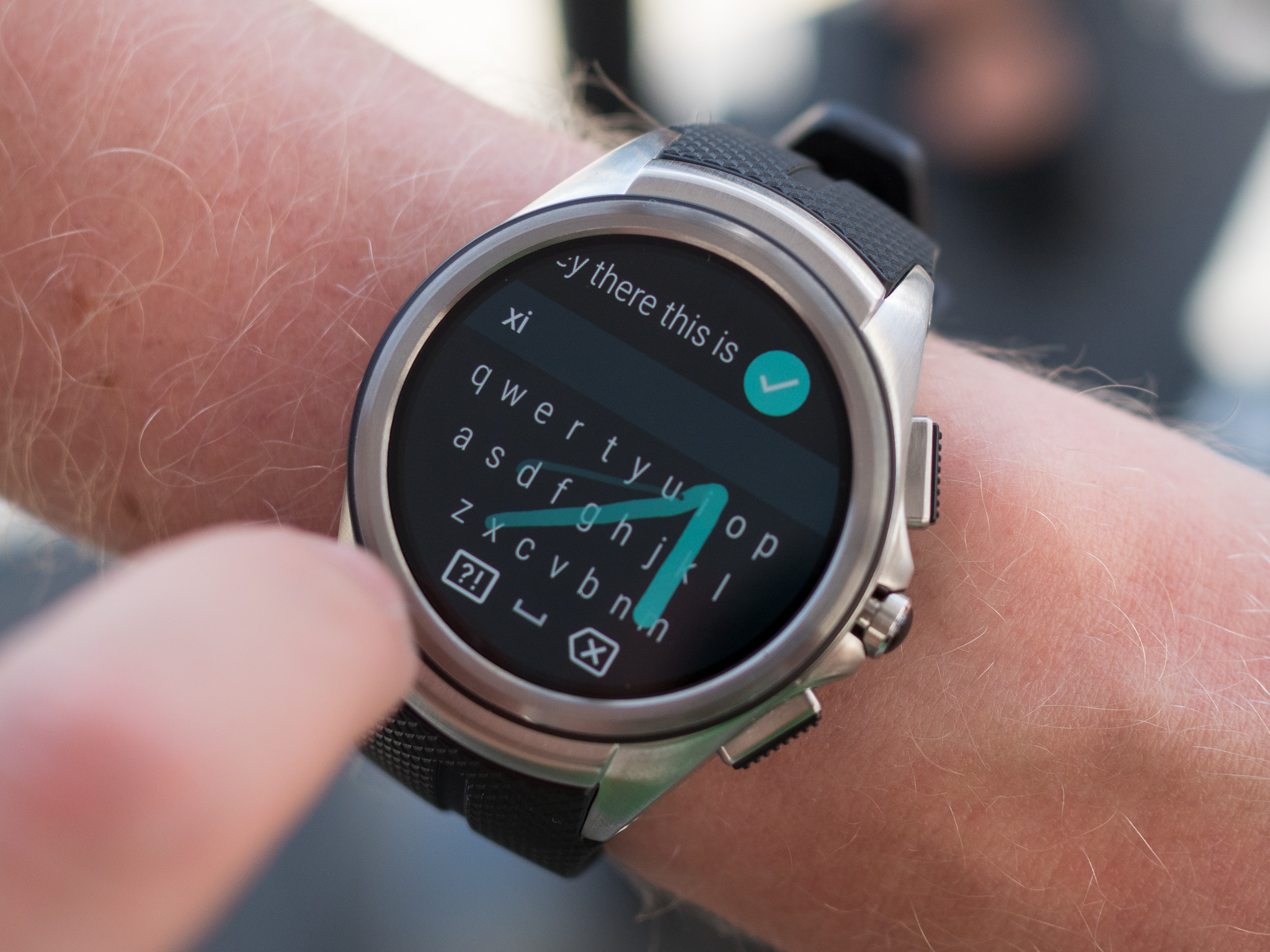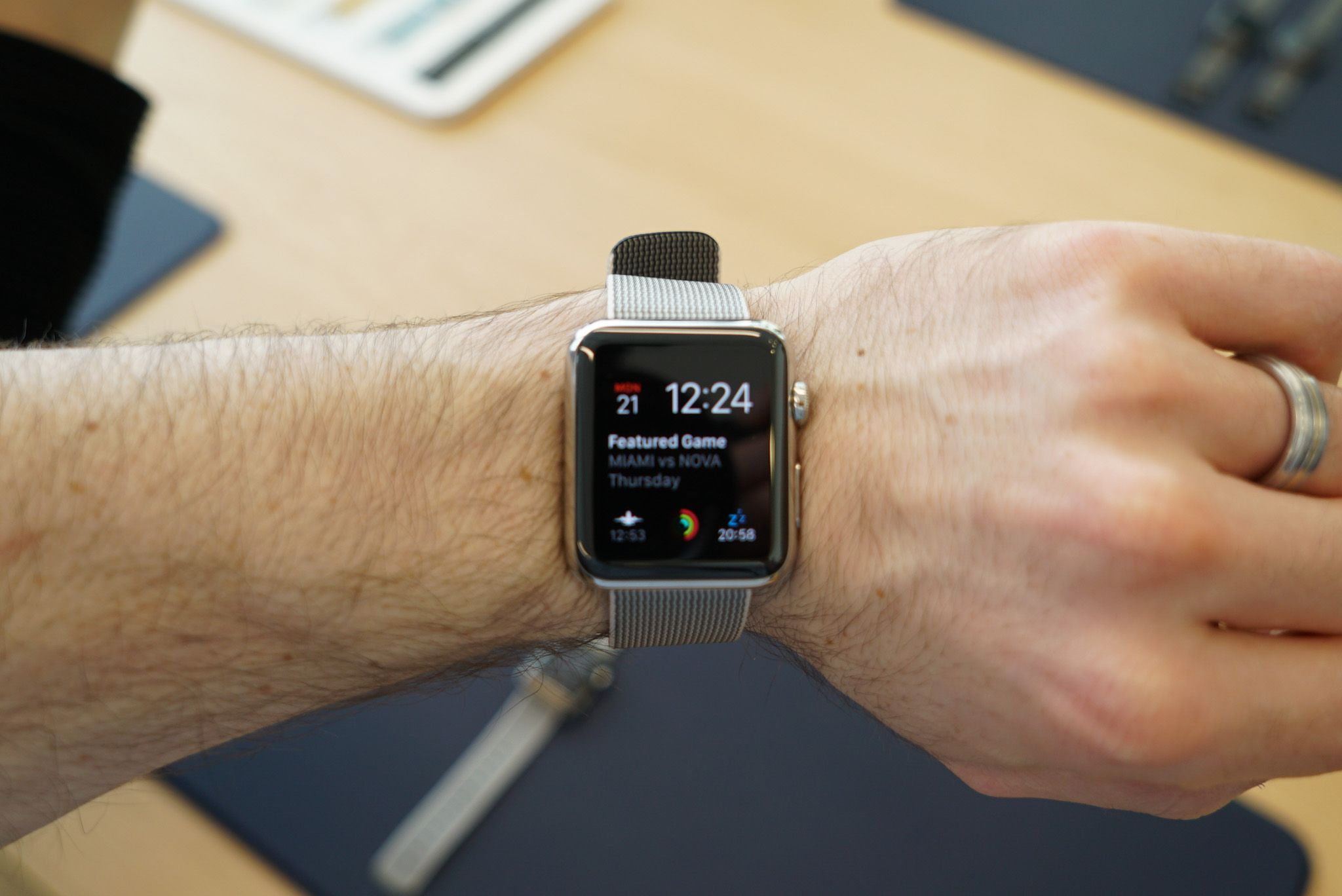Android Wear's latest missteps reinforce Apple Watch strengths


There is no question of the value of text input on a smartphone. As popular as Siri and other voice assistants have become over the past few years, pecking out an email or text message using an on-screen keyboard, with autocomplete and prediction, mimics physical keyboards in the best possible ways.
In the wearable space, the opposite is true. Screens are typically too small, and too oddly-shaped, to facilitate on-screen keyboards, which leaves dictation as the likely ideal way to send someone a message longer than a few words. The Apple Watch, in particular, utilizes Siri for a variety of purposes, from dictating text messages and email replies to asking about the weather.
This week at Google's developer conference, a new version of Android Wear tacitly posited that voice isn't ideal in every situation, adding three new ways to input text on a tiny, often circular, smartwatch screen. The first, Smart Replies, is already used by the Apple Watch in many situations, though Google's implementation varies the potential responses based not just on the text on screen, but data from the Google account connected to the watch itself.
Android Wear started out relatively focused, and has since expanded to mimic the functions of a smartphone.
The second, letter recognition, gives Android Wearers nearly the whole screen to trace out individual letters that are then converted into words and sentences, harkening back to the early days of stylus-based PDAs. Except instead of the precise point of a stylus, users must use the relatively fat stub of a forefinger.
The third, and most vexing, of new input methods is a full-size keyboard — or, as full-sized as one can get on a tiny 1.4-inch smartwatch display. We've seen such examples on many Samsung smartwatches, usually met in equal parts with derision and confusion. In the case of Google's implementation, Android Wear 2.0 will support trace typing, which is generally more forgiving than tapping on such small touch targets.
The bigger question is why. Android Wear started out relatively focused, and has since expanded to mimic the functions of a smartphone: native apps, then most recently, standalone apps with cellular support. Some Android-based watches can even make phone calls with a combination of microphones and a speaker, or the use of a Bluetooth headset.
In this way, Android Wear is straying from the promise of the Apple Watch, which despite criticism of being too reliant on the iPhone, was designed as a companion. Such tension has been meted out in think pieces on both sides of the argument over the past two years, with some companies like Neptune purporting to replace the smartphone entirely by bundling a watch with everything one needs to stay connected, including a large display, plenty of memory, a fast processor and, of course, a cellular radio.
Master your iPhone in minutes
iMore offers spot-on advice and guidance from our team of experts, with decades of Apple device experience to lean on. Learn more with iMore!
In that case, little consideration was made to aesthetics — who wants a small smartphone strapped to his or her wrist — or battery life, which promises to be measured in minutes, not hours.
Moreover, the Apple Watch, despite its meandering and flawed user workflow, continues to build in popularity largely on the strength of its companion promise: Most owners we've spoken to prefer it over competing platforms not for its native apps but its ability to convey notifications in thoughtful ways.
The Apple Watch is not perfect, but it's also a fully-formed thought
While it's not even worth imagining an Apple Watch with an on-screen keyboard for text input — even the 42mm model has a screen considerably smaller than most Android Wear devices — it is important to identify the reasons Apple would never consider adding such a feature, and why Google, two years after the platform's debut, relented to that same tension.
The Apple Watch is not perfect, but it's also a fully-formed thought. With the latest version of Android Wear, it's increasingly clear that the platform is little more than a list of individual features crammed together, benefiting no one but the teams responsible for implementing them.
Daniel Bader is a Senior Editor at iMore, offering his Canadian analysis on Apple and its awesome products. In addition to writing and producing, Daniel regularly appears on Canadian networks CBC and CTV as a technology analyst.


